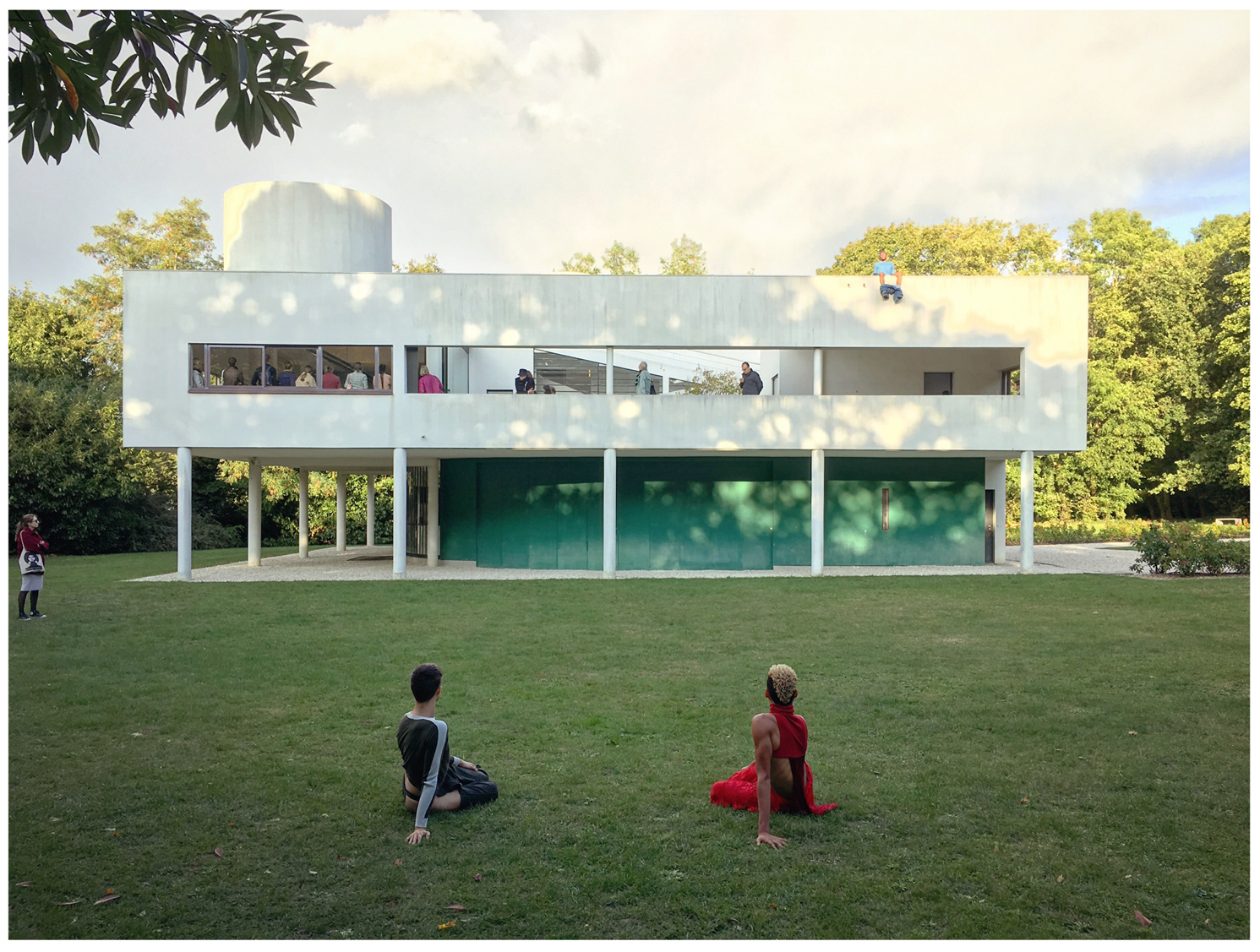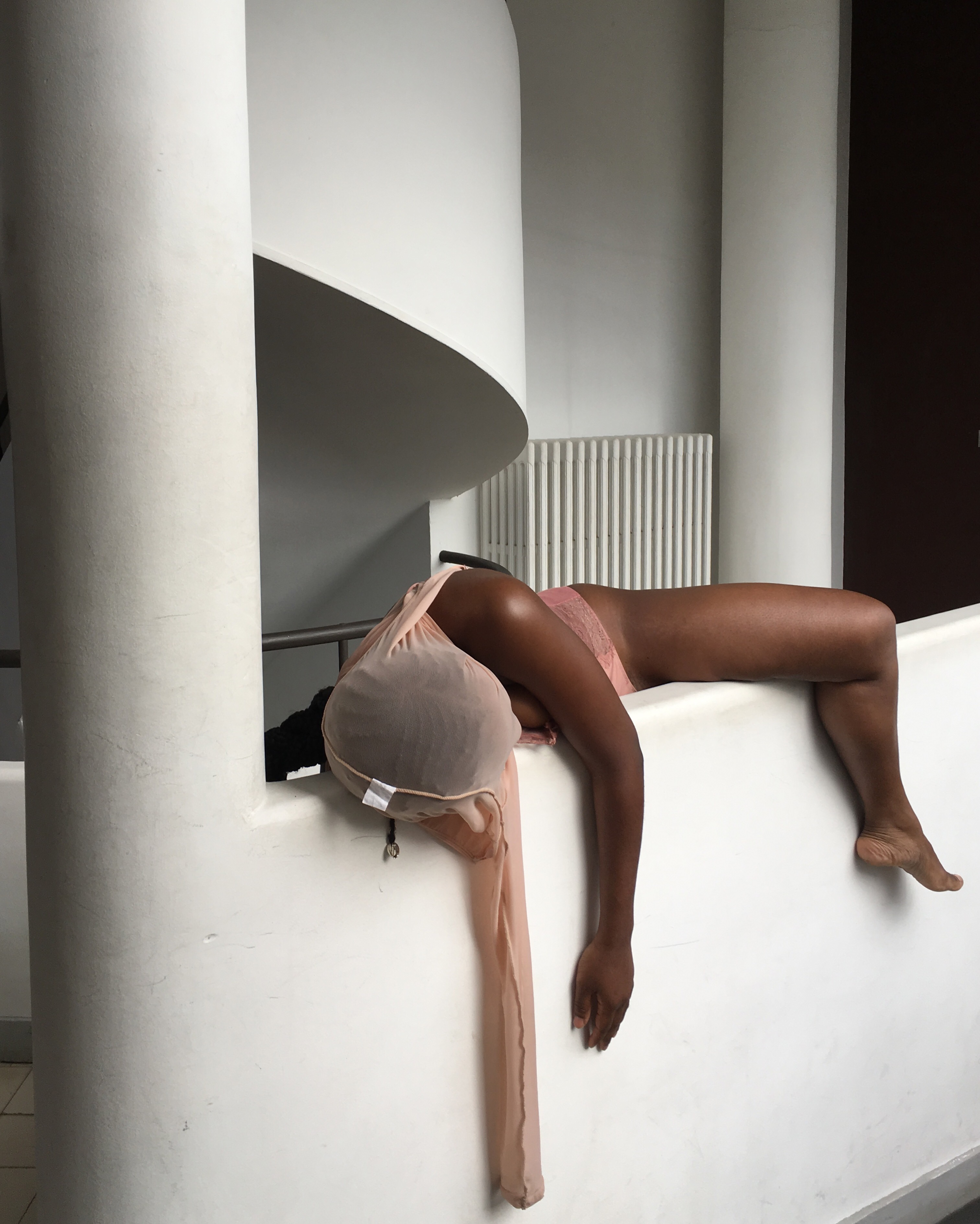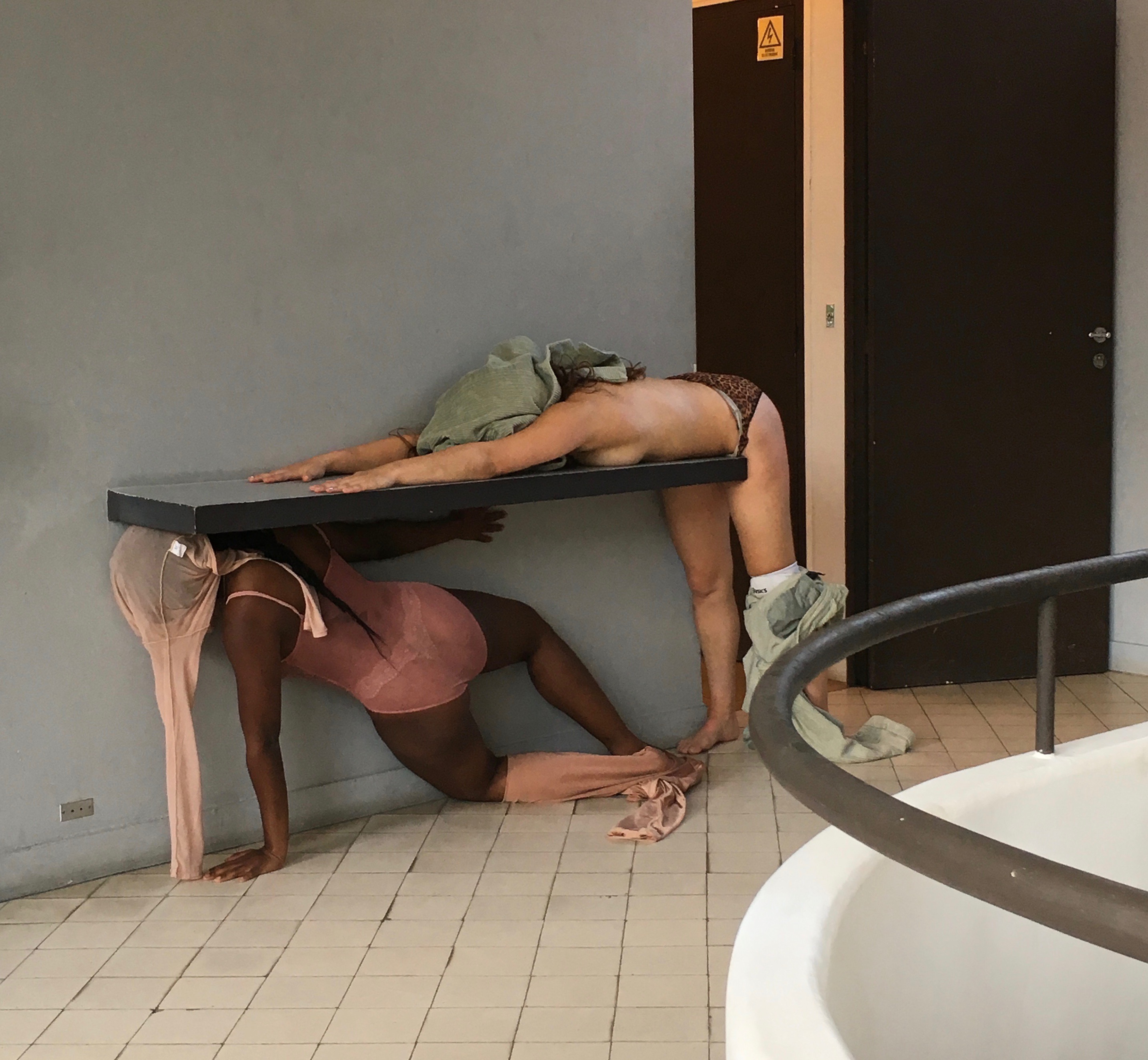Gerard and Kelly's Modern Living - The Architect's Newspaper
Gerard and Kelly draped Villa Savoye in flesh to explore modernism's sensuality
Click here to read the published article

Gerard and Kelly’s "Modern Living" is a dance performance that has been presented in a series of famous modern houses including Philip Johnson’s Glass House, the Schindler House and Mies Van der Roe’s Farnsworth House. This dance troupe cavorts through the spaces of each house to explore, in their words “intimacy and domestic space within legacies of modernist architecture.” There is additionally an emphasis on an exploration of “queer space” where voyeurism and exhibitionism are uncovered through the interaction of the dancers through the transparency of the spaces.
The latest incarnation of "Modern Living” is in Le Corbusier’s Villa Savoye completed in 1930 in Poissy, a suburb of Paris. Probably his most famous house, at the time it was an astoundingly radical image of a floating white pavilion elevated on thin columns above the flat lawn below. It is shocking even now and reminds us of Frank Lloyd Wright’s comment that “human houses should not be like boxes blazing in the sun.” It was a complete rejection of all things Beaux-Arts and classical. Where a house was rooted firmly on the ground, this modernist villa hovered above; in place of small windows punched into a wall, it had a continuous horizontal strip of glass; where a gable roof provided shelter, there is a flat roof terrace of paving and plants. Compared to the excessive ornament of the Beaux Arts, and even contemporary Art Deco interiors such as that of Mallet-Stevens, the Villa Savoye is abstract and stripped bare, the walls are stucco, the only ornament is the occasional highlight of a deeply saturated painted color. Architecture is reduced to space, form and light, the house is essentially as “naked” as the Greek ruins that Le Corbusier admired.
The Villa Savoye first appeared in Le Corbusier’s’ Complete Works in grainy black and white photos, with barely any furniture inside. The Savoye family only lived there briefly, complaining that it leaked and was uninhabitable. The interior was seen briefly in a black and white film by Pierre Chenal of 1930 along with other Le Corbusier houses and his urban plan for Paris. It was occupied by the Germans, then the Americans in World War II, and was a derelict ruin used as hay barn until its restoration from 1985-97. Since then, it has been a mysteriously empty shell and has not been the site of dance even though Le Corbusier’s idea was that architecture is activated by the human presence in a “promenade architecturale” as one walks through and around the forms and spaces of the house.

